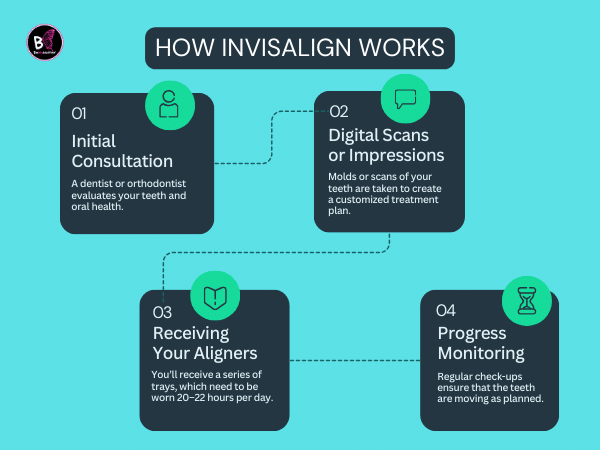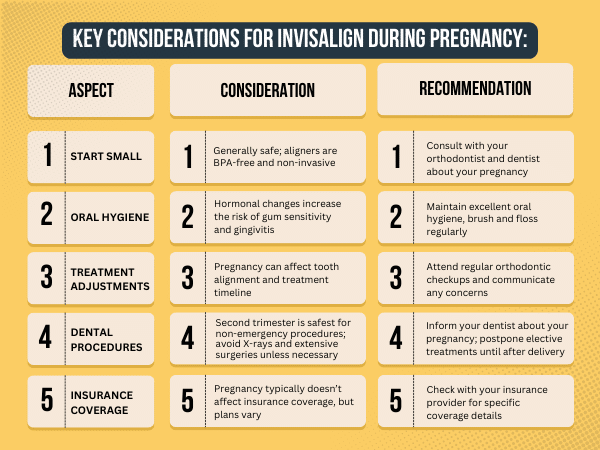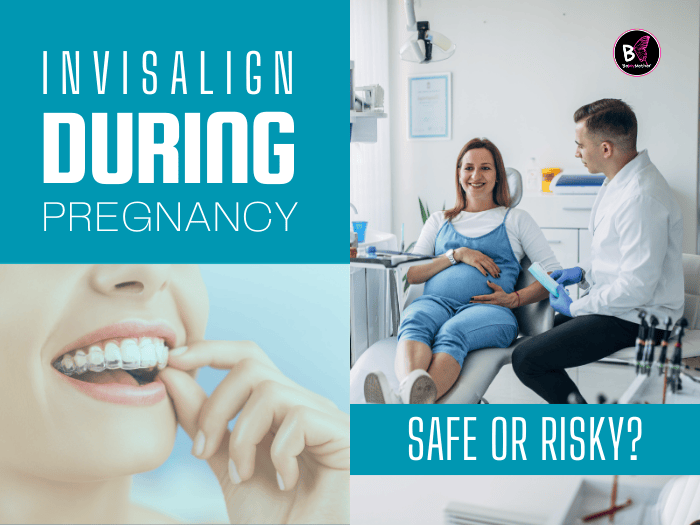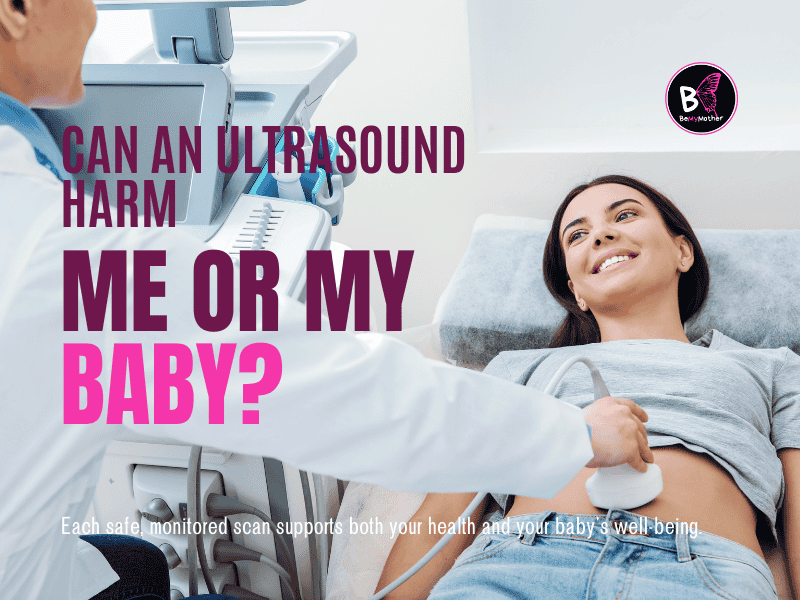📌 Quick Answer: Yes, Invisalign is generally considered safe during pregnancy, but expectant mothers may experience increased gum sensitivity and other oral health changes due to hormonal fluctuations. Always consult your dentist before starting or continuing treatment to ensure the best care for your teeth and gums.
Invisalign has become a popular alternative to traditional braces, offering a nearly invisible and removable option for teeth alignment. But if you’re pregnant or planning to be, you may wonder: Is Invisalign safe during pregnancy? Can hormonal changes affect the treatment? Should you wait until after giving birth to start Invisalign?
This guide will walk you through everything you need to know about wearing Invisalign during pregnancy, including safety, potential risks, and tips for maintaining your oral health.
1. Invisalign During Pregnancy: Is It Safe?
Many dental professionals consider Invisalign safe for pregnant women because it doesn’t involve metal brackets or wires that could irritate sensitive gums. However, some concerns arise due to:
- Hormonal changes that affect gum health.
- Mild discomfort due to increased gum sensitivity.
- Potential risks of dental X-rays before starting treatment.
🔍 Research Insight: Smile Stories states that while there is limited research on Invisalign and pregnancy, orthodontic professionals generally consider it a safe option for expectant mothers. (Source)
✅ Bottom Line: Invisalign is generally safe, but discuss any concerns with your dentist before starting or continuing treatment.
2. How Invisalign Works: A Step-by-Step Guide

Invisalign uses clear, custom-made aligners to gradually shift teeth into the correct position. The treatment typically follows these steps:
- Initial Consultation: A dentist or orthodontist evaluates your teeth and oral health.
- Digital Scans or Impressions: Molds or scans of your teeth are taken to create a customized treatment plan.
- Receiving Your Aligners: You’ll receive a series of trays, which need to be worn 20–22 hours per day.
- Progress Monitoring: Regular check-ups ensure that the teeth are moving as planned.
🔍 Research Insight: River Family Dentist explains that the Invisalign process begins with a consultation and digital impressions to develop a customized plan. (Source)
✅ Bottom Line: Invisalign works the same for pregnant women, but pregnancy-related dental changes may affect the process.
3. Dental Health Changes During Pregnancy and Their Impact on Invisalign
Pregnancy brings hormonal fluctuations that can increase the risk of oral health issues, such as:
- Swollen and bleeding gums (pregnancy gingivitis).
- Tooth sensitivity due to increased blood flow.
- Higher risk of cavities from changes in saliva production.
🔍 Research Insight: Ravenscourt Dental Practice notes that fluctuating hormone levels can increase the risk of gum disease and loose teeth during pregnancy. (Source)
✅ Bottom Line: If you’re undergoing Invisalign treatment, maintain excellent oral hygiene and monitor gum health closely.
💡 Related Article: Experiencing an unusually dry mouth during pregnancy? Is Mouth Dryness a Sign of Pregnancy? 8 Surprising Facts Every Woman Should Know explores why this happens and how it can impact oral health.
4. Invisalign vs. Braces: Which Is Better During Pregnancy?
Braces or Invisalign? (Which is BETTER)
Many pregnant women wonder if Invisalign is better than traditional braces during pregnancy. Here’s a comparison:
| Feature | Invisalign | Braces |
| Comfort | Removable, less irritation | Fixed, may cause discomfort |
| Gum Sensitivity | Can be removed for relief | Can irritate swollen gums |
| Dietary Restrictions | No food restrictions | Avoid sticky/hard foods |
| Hygiene | Easier to clean | Requires special cleaning tools |
| Aesthetic Appeal | Clear and nearly invisible | Metal brackets are visible |
✅ Bottom Line: Invisalign is a better choice during pregnancy due to its removability, comfort, and ease of maintenance.
💡 Related Article: Struggling with headaches but unsure about medication? Can I Take Excedrin During Pregnancy? 11 Key Points to Decide If It’s Safe for You provides guidance on whether this pain reliever is safe.
5. Managing Invisalign During Pregnancy: Care Tips and Best Practices

If you choose to continue or start Invisalign while pregnant, here are some tips:
✅ Practice good oral hygiene: Brush and floss regularly to prevent plaque buildup.
✅ Drink plenty of water: Prevent dry mouth and maintain saliva production.
✅ Avoid acidic foods: Reduce irritation to sensitive gums.
✅ Use a soft-bristled toothbrush: Gentle on swollen gums.
✅ Store aligners properly: Keep them in their case when not in use.
🔍 Research Insight: Ravenscourt Dental Practice states that proper Invisalign care includes wearing aligners for 20-22 hours daily and maintaining strict oral hygiene. (Source)
✅ Bottom Line: Proper maintenance will ensure a smooth Invisalign experience during pregnancy.
6. Dental Treatments During Pregnancy: What’s Safe and What to Avoid?
Certain dental treatments are safe during pregnancy, while others should be postponed.
| Safe Treatments | Treatments to Avoid |
| Routine cleanings | Non-essential X-rays |
| Fillings | Teeth whitening |
| Gum treatment | Cosmetic procedures |
Best Time for Dental Procedures:
- Second trimester is ideal for dental work.
- First trimester should avoid unnecessary treatments.
- Third trimester may be uncomfortable for long procedures.
✅ Bottom Line: Routine dental care is safe, but non-essential treatments should wait until after birth.
💡 Related Article: Worried about needing a tooth extraction while expecting? Can You Get a Tooth Pulled During Pregnancy? 9 Essential Facts for a Safer, Healthier Pregnancy explains when it’s safe and what precautions to take.
💡 Related Article: Facing a root canal while pregnant? Can You Have a Root Canal During Pregnancy? 8 Expert Tips for Safe Dental Care covers the safest approaches to dental procedures while expecting.
7. Can Pregnancy Affect Teeth Alignment and Invisalign Results?
Hormonal changes during pregnancy can lead to loose ligaments and shifting teeth, potentially affecting Invisalign results.
Regular orthodontic checkups are essential to monitor your progress and adjust your treatment plan as needed. Communicating any concerns or discomfort to your orthodontist is crucial. If you are wondering, “Can I wear Invisalign during pregnancy” you can, but constant orthodontic checkups are important.
🔍 Research Insight: Smile Stories mentions that pregnancy hormones, especially progesterone, can affect the ligaments and bones supporting the teeth. (Source)
✅ Bottom Line: Pregnancy may slightly affect tooth movement, but regular check-ups can help adjust your Invisalign plan accordingly.
💡 Related Article: Wondering if your beauty routine needs to change? Is Laser Hair Removal Safe During Pregnancy? 10 Crucial Facts You Need to Know dives into the safety of cosmetic procedures during pregnancy.
8. Cost and Insurance: Can You Get Invisalign for Free When Pregnant?
Pregnancy itself doesn’t usually impact dental insurance coverage for Invisalign, meaning free treatment is unlikely. However, some insurance plans and financial options may help reduce costs or make payments more manageable. Potential coverage and payment options include:
✔ Employer-provided dental insurance, which may partially cover orthodontic treatments.
✔ Flexible Spending Accounts (FSAs) or Health Savings Accounts (HSAs) that can be used toward Invisalign expenses.
✔ Payment plans offered by Invisalign providers, allowing for installment-based payments.
It’s essential to check with your insurance provider for specific coverage details.
✅ Bottom Line: While pregnancy doesn’t make Invisalign free, various financial options can help manage costs effectively.
📌 FAQs: Answering Common Questions About Invisalign During Pregnancy
Q1: Is Invisalign safe during pregnancy?
A1: Yes, but hormonal changes can cause gum sensitivity and oral health changes, so proper care is essential.
Q2: Can I start Invisalign treatment while pregnant?
A2: Yes, but discuss with your orthodontist to ensure it won’t be affected by pregnancy-related gum changes.
Q3: Does pregnancy affect Invisalign results?
A3: Hormonal fluctuations can cause slight tooth movement, which may require adjustments to the treatment plan.
Q4: Can I wear Invisalign while experiencing morning sickness?
A4: Yes, but make sure to clean your aligners thoroughly after vomiting to prevent bacteria buildup.
Q5: Do I need to inform my orthodontist that I’m pregnant?
A5: Yes, always inform them so they can adjust treatment if necessary.
Conclusion: Should You Get Invisalign During Pregnancy?
In conclusion, while undergoing “Invisalign during pregnancy” is generally considered safe, it requires careful management and open communication with your dental professionals. By maintaining excellent oral hygiene, attending regular checkups, and addressing any concerns promptly, you can safely continue your Invisalign treatment throughout your pregnancy.



